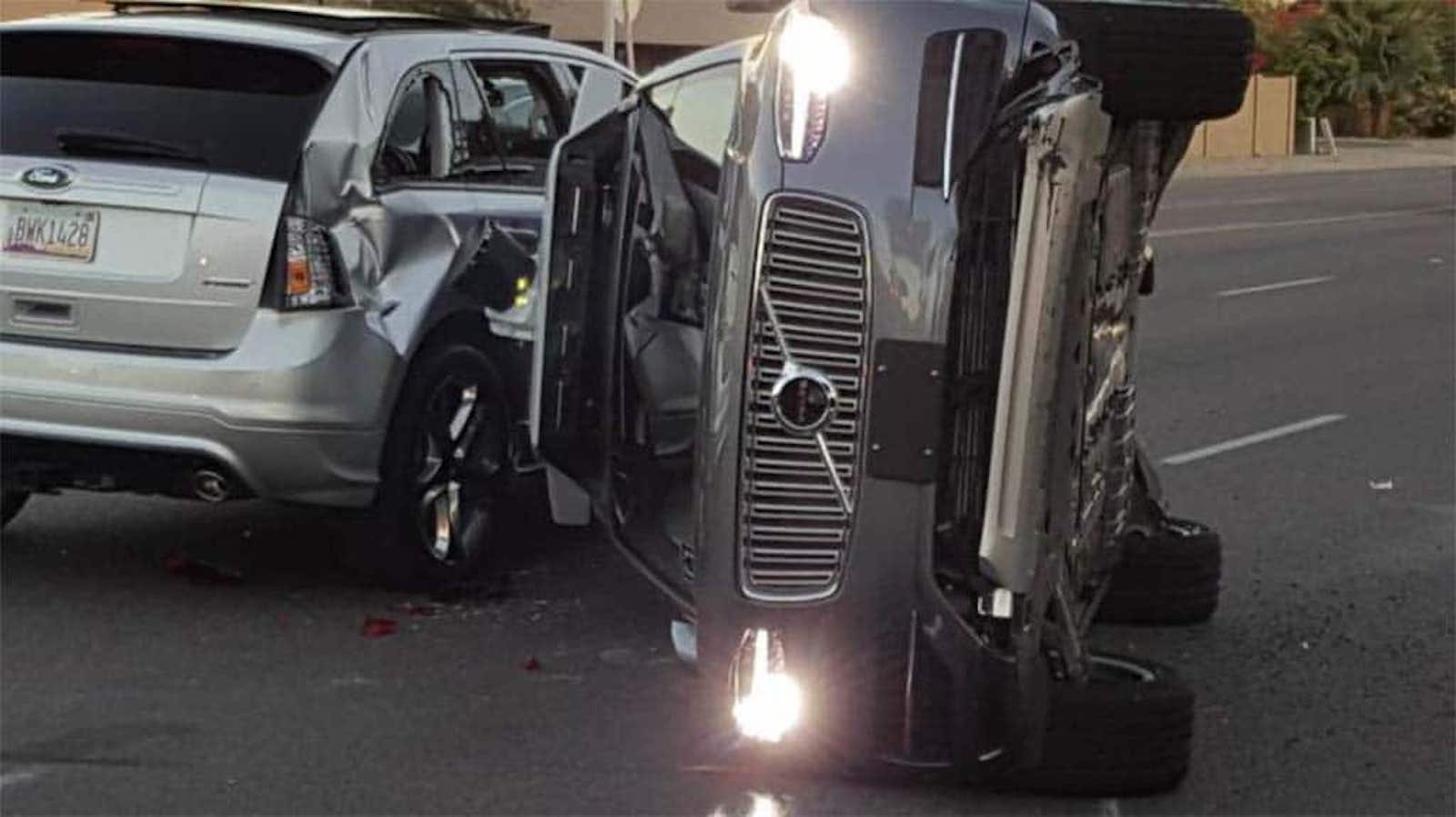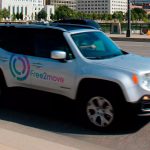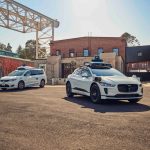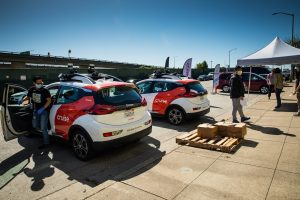A pedestrian crossing a busy street in San Francisco was trapped under a Cruise robocab for several minutes after first being hit by another vehicle, an incident that adds anew to concerns about the safety of the driverless vehicles that are becoming increasingly common on that city’s roadways.
Both the National Highway Traffic Safety Administration and various state and local officials are looking into the Monday night incident, which left the woman in critical condition at a San Francisco hospital.

The concerns about robocabs rose again after a Cruise EV was involved in a pedestrian crash in San Francisco this week.
It’s the latest in a growing list of incidents involving the driverless vehicles being tested in San Francisco and other cities. And it comes less than two months after California regulators approved a substantial expansion in the use of such vehicles operated by both General Motors’ Cruise LLC subsidiary, as well as the Google spinoff Waymo.
A number of local officials, including the San Francisco fire chief, opposed that move, citing a variety of incidents that have occurred in the city involving robocab prototypes.
The crash caught on video
The latest incident occurred Monday, Oct. 2 about 9:30 p.m. PDT. A modified Chevrolet Bolt EV operated by Cruise pulled up to a stoplight alongside another vehicle with a human driver behind the wheel. When the light turned green both began moving forward, based on both witnesses and video recorded Cruise robocab.
At that point, the pedestrian appeared to enter the street in front of the manned vehicle which was the first to strike her. She rolled onto its hood, hitting the windshield before being flung in front of the unmanned Chevy Bolt, the video appeared to show, according to a review cited by the Washington Post.
“The initial impact was severe and launched the pedestrian directly in front of the” robocab, Cruise spokesperson Hannah Lindow said. The unmanned vehicle immediately “braked aggressively to minimize the impact,” Lindow added. But it still struck and rolled over the unidentified pedestrian.
Multiple traumatic injuries
Photos published by the Washington Post show one of her legs sticking out from under the vehicle. She suffered “multiple traumatic injuries,” the San Francisco fire department reported.
While the Cruise vehicle remained at the scene, the other vehicle sped away.
Betting big on autonomous driving
The auto industry has been investing billions of dollars in the development of autonomous vehicles, in various forms.
The technology has received a significant push from the ride-sharing business, companies like Cruise, Waymo and others estimating they could save significant money by taking the driver out of their vehicles. Drivers are typically the costliest part of the rides those services offer.
Uber’s fatal crash
But critics note there have been a number of troublesome incidents, including the crash by an Uber prototype in 2018 near Mesa, Arizona. A bicyclist was hit while attempting to cross a street at night. The Uber vehicle had a human “operator” behind the wheel who was supposed to intervene in such situations but she was distracted and failed to respond in time.
Both Uber and rival Lyft subsequently ended their own efforts to develop driverless vehicles, though they’ve indicated they would like to buy autonomous technology from outside vendors when it’s considered ready.
Cruise and Waymo push on
More recently, Cruise and Waymo have begun field-testing fully driverless vehicles, such as the Chevy Bolt EV involved in Monday’s crash. In August they received the go-ahead from the California Public Utilities Commission to begin paid service around San Francisco and to both expand the number of vehicles they use and the hours they can operate.

Issues between self-driving taxis and pedestrians began when Uber struck a pedestrian in Phoenix several years ago.
Ahead of that move, a number of critics spoke out against the expansion, including San Francisco Fire Chief Jeanine Nicholson who said such robocabs are “not ready for prime time.”
600 incidents
She and others cited 600 “incidents” involving Cruise and Waymo vehicles logged since spring 2022. In a number of those cases, robocabs would unexpectedly stop – often on main roads and in intersections – requiring assistance from human company representatives to get them going again.
Genevieve Shiroma, the only Commissioner to vote against the robocab expansion in July, agreed with critics, calling the move “premature,” while warning that regulators lack “present sufficient information” to properly evaluate the safety of the technology.
In its final ruling, the PUC said it “acknowledges continuing and emerging challenges” and “will engage with stakeholders” to monitor the expanded public use of robotaxis.
NHTSA has not given any details on its own investigation of the latest San Francisco crash.







0 Comments